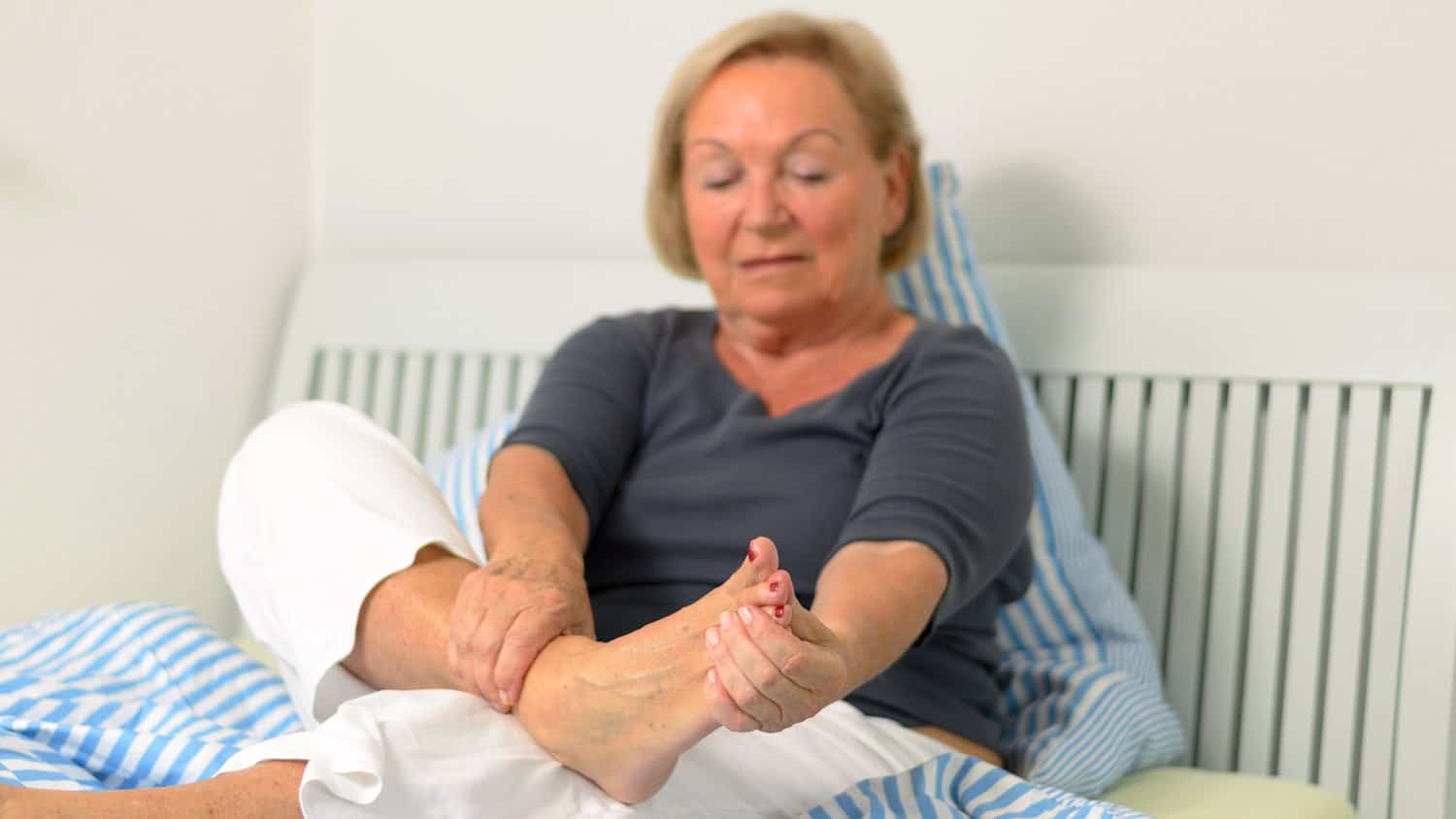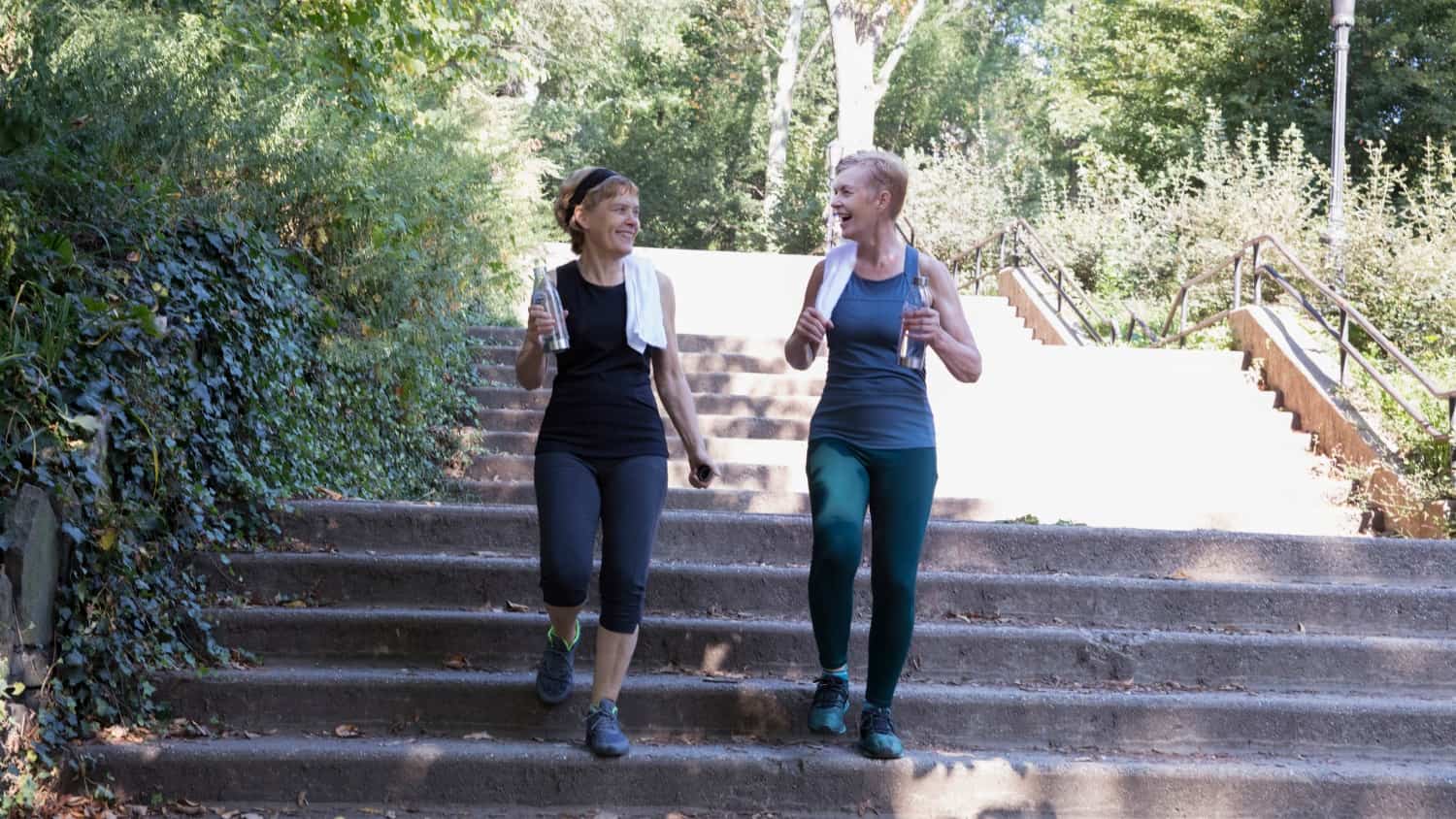
The 5 Secret Messages of Foot Pain After 60
Feel like your dogs are barkin’ at you more and more as you get older? You’re not alone. Almost 90% of older adults report experiencing some type of foot pain according to the International Council on Active Aging.
With most adults reaching an estimated 115,000 miles walked in their lifetime, your feet take a beating over the years and it is more and more noticeable as you age. If acute or chronic foot pain has you avoiding activity or heading for the medicine cabinet daily, you might want to pay attention to what your feet are trying to tell you.
Your Shoes Are Too Small
Did you know three out of four seniors reportedly wear shoes that are too small for their feet? Not only do feet naturally widen as you age, but you also start to lose feeling in your feet as the decades roll by, lessening your awareness of how tight a fit your shoe truly has.
Over the age of 60 especially, it is important to get your foot properly sized by a specialist in a shoe store to find out if you’re investing in the right-sized footwear. Proper-fitting shoes that support your ankle and leg movements play a key role in preventing falls and promoting continued exercise as you age as well.
Lose the Heels
Speaking of shoes, a lifetime of wearing heels (from basic pumps to the 3-inch dress shoes you donned for all your family’s weddings) has made your feet more susceptible to deformities like bunions and hammertoes, as well as arch problems and ingrown toenails.
High heels are naturally uncomfortable, but the body mechanics of pushing your toes into a narrow point results in a large amount of pressure on the very front of your foot and added strain to the tendons and muscles surrounding your foot and ankles. This can also cause ailments like tendonitis, stress fractures and pinched nerves. Ouch!
You Need an Orthotic Insert
Painful foot conditions like metatarsalgia, which is the wearing away of your natural cushion on the ball of your foot – oftentimes from wearing heels – and plantar fasciitis, which is the inflammation and strain of the tissue which runs along the bottom of your foot (more common among athletes and runners), might be aided by an orthotic insert.
Orthotic inserts are durable foot-shaped pads that can be placed inside your shoe to offer cushioning, arch support, ankle stabilization and pain relief. Over-the-counter orthotic inserts can be purchased online, in most pharmacies and at some grocery stores. While custom orthotics cost more money typically, they are only needed if a podiatrist or other medical provider requires it.
You Are Low on Electrolytes
Muscle cramps in the feet, from toes locking up to pain shooting through your arch, may be a result of an imbalance in your essential electrolytes. Minerals like potassium and magnesium, which you naturally consume through a healthy diet, serve as arbiters of the electrical signals which get sent through your body to, in part, control muscle contraction.
If your electrolytes are low, you may notice muscle cramping and spasticity (tight, stiff, or uncontrollable muscle contractions). Up your electrolyte intake with mineral-rich foods like bananas, spinach, kidney beans and avocado, and talk to your doctor about checking electrolyte levels with a simple blood test. A daily supplement may be recommended.
You Could Use a Mobility Aid
Eeek, the dreaded discussion about mobility! Don’t fret. Mobility aids are not the cumbersome, life-diminishing tools we sometimes make them out to be. Mobility aids can be empowering, assistive devices that help promote activity and provide support and pain relief.
If you are experiencing foot and leg pain specifically after walking or standing for extended periods of time, a trip to the doctor to talk about extending your mobility and addressing your foot pain is a good idea.
With a quarter of your body’s bones being found in your own two feet, foot care plays an important role in aging. In addition to seeing a healthcare provider about your foot pain, taking regular care of your feet must be on your daily radar.
Washing and drying feet thoroughly each night, rubbing lotion on them to maintain strong and moisturized skin and even exercising them to stretch the muscles and boost blood circulation are simple, effective places to start.
Have you been affected by foot pain? What steps have you taken to alleviate pain? If so, what’s your favorite trick for taking care of your feet? Please share in the comments.
Tags Medical Conditions






